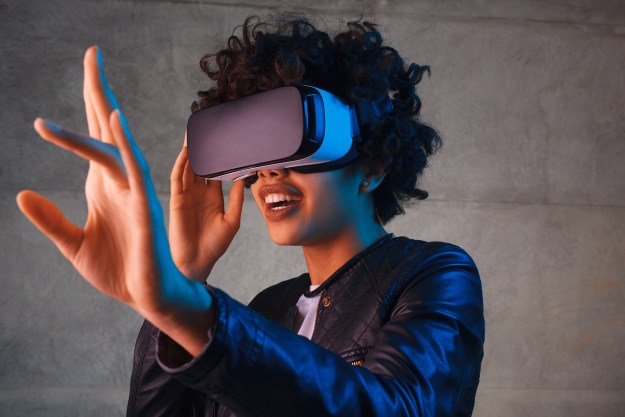Forget seeing how fast their fingers move across the keys, now you can see how fast their neurons fire — at least, that’s the premise behind GE’s Neuro VR experience, which allows you to explore the “complex universe inside [a musician’s] head.” Getting into someone’s brain has never been as exciting or looked as beautiful as it does through the futuristic lens of the Oculus, in which data from an MRI scan is translated into bursts of color representing complicated visual, auditory, and motor functions. And while current technology only allows us to see brain activity in a two-dimensional manner, this new technology may literally add another dimension.
Speaking with Engadget, Sandeep Gupta from GE Global Research noted, “[GE’s Neuro VR is] a very interactive and intuitive way of visualizing complex, multidimensional neuroimaging data. A neurosurgeon could use tools like these to get a complete view of lesions and possible impact of surgery on brain networks and function. The most immediate benefit of the Neuro VR system is perhaps in training for neuroscientists.”
Today, says Cory Strassburger, co-founder of Kite & Lightning, the VR content studio behind the immersive imagery, “… physicians will view MRI brain scan data one layer at a time on a traditional 2D computer monitor.” But with this technological breakthrough, technology may have opened up “… the possibility of seeing into this dimensional data in 3D space,” allowing doctors to “literally move [his or her] head forward and see into [the] brain.”
“If you wanted to,” Strassburger said, “You could scale [the] brain up to the size of a car and walk around inside.” Considering that scientists’ knowledge of perhaps the most powerful organ in our bodies is still relatively limited, the implications of the VR experience could be huge.
“The beauty is this big mystery inside our brain is just beginning to unfold,” said Strassburger, “I think VR will play an important roll on both the scientific and educational sides.”
Editors' Recommendations
- Want an RTX 4080? Nvidia may have a way to make it easier to get
- Apple’s VR headset could get these surprise iOS features
- This futuristic haptic vest should make virtual reality feel more realistic
- Pimax’s 12K QLED VR headset wants to take virtual reality to the next level
- We have some bad news about Apple’s rumored VR headset


